
Piercing Aftercare
Proper piercing aftercare is essential to ensure the healing process goes smoothly and to minimize the risk of complications such as infection or irritation. Below are general guidelines for piercing aftercare, but it's important to follow any specific instructions given to you by your piercer, as aftercare can vary depending on the type of piercing you have:
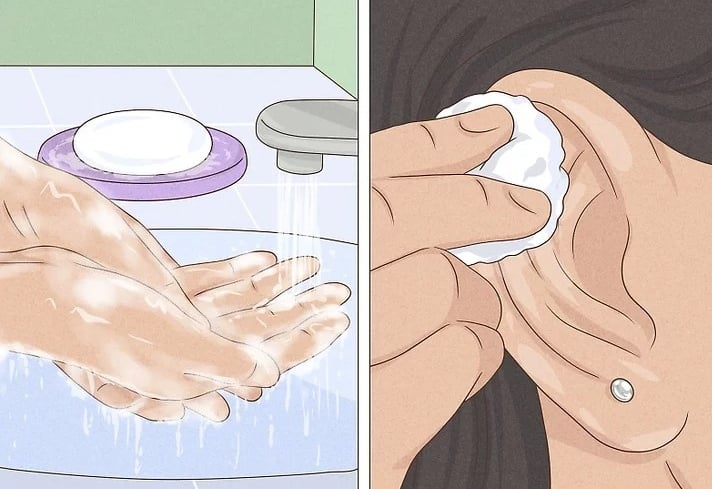

1.Clean the surrounding skin and your hands with a mild anti-bacterial soap or wash.
Before you clean your new piercing directly, it's important that your hands and your entire ear are clean so that you don't introduce dirt or bacteria into your wound.
Choose a mild soap, and avoid any cleansers with perfumes, which can irritate your sensitive skin.
Try to avoid touching your piercing as much as possible:
Every time you touch your piercing you can irritate it and make it take so much longer to heal. Also, if you haven't washed your hands, you can transfer bacteria to the piercing.
EXPERT TIP

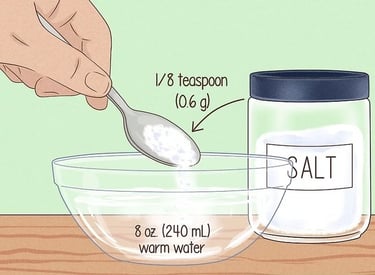
2.Use a simple saline solution to clean your piercing.
Medical professionals recommend that you use a saline (salt) solution for cleaning. It’s best to buy a sterile saline solution or wound wash from your piercer or a drug store, but you can also prepare one yourself:
Mix 1/8 teaspoon (0.6 g) of sea salt with 8 fluid ounces (240 mL) of warm water. Don’t use table salt, which contains anti-caking ingredients that can cause irritation. Be sure to measure the salt carefully so you don’t create an overly salty solution, which can damage the healing tissue.
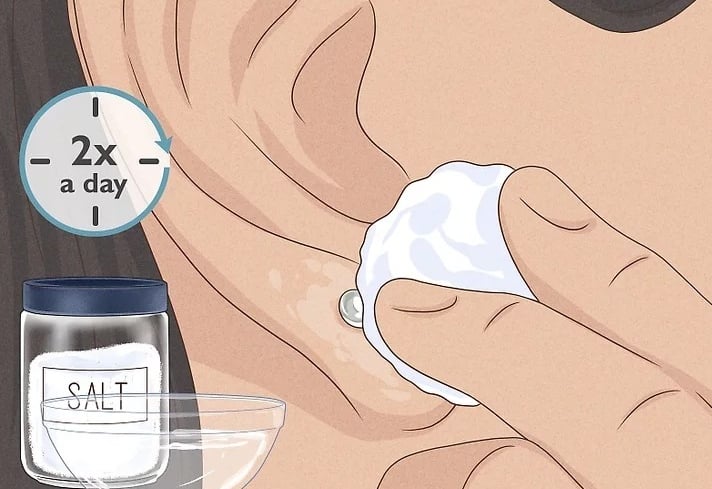

3.Apply the saline solution with clean, disposable cotton 2 times a day.
Instead of reusing washcloths, you should dip gauze or a cotton ball in your saline solution each time you clean your piercing. Don’t use cotton swabs, which can irritate the piercing.
Then, gently apply the saline solution all around your piercing.


4.Gently wiggle the piercing back and forth.
In order to get the saline solution throughout the entire piercing, many experts recommend that you carefully move your piercing back and forth as you clean it.
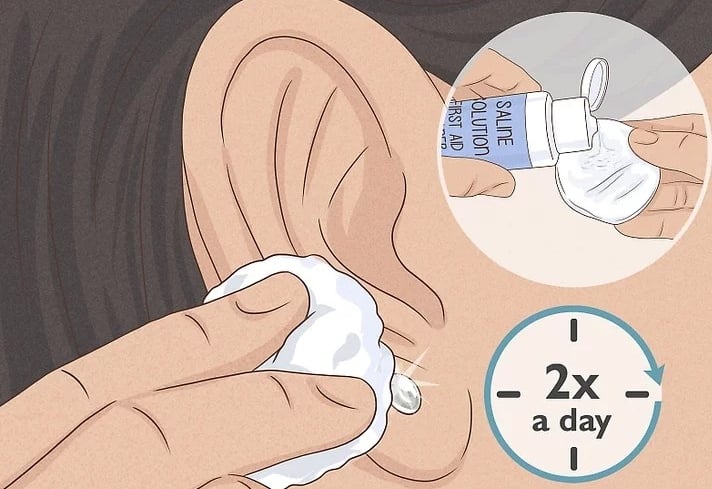

5.Take care not to over-clean your piercing.
Washing your new piercing more than twice a day could lead to irritation, which can extend the healing process longer than necessary.

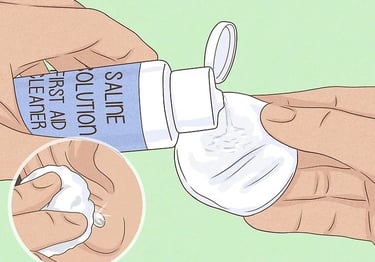
6.Avoid using rubbing alcohol or hydrogen peroxide on your piercing.
While you might think that alcohol or peroxide will sterilize your piercing, both of these can actually slow the healing process by over-drying your wound and killing healthy skin cells.

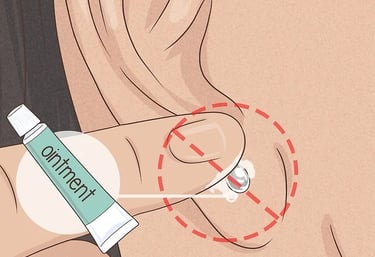
7.Refrain from applying additional medicine to your piercing.
Experts also recommend that you do not use any ointments or antibiotic creams unless directed to by a physician for an infection. These too can be counter-productive to the healing process as they can slow the flow of oxygen to your wound.
Because they are so sticky, they can also trap dirt and bacteria, potentially setting you up for further trouble.
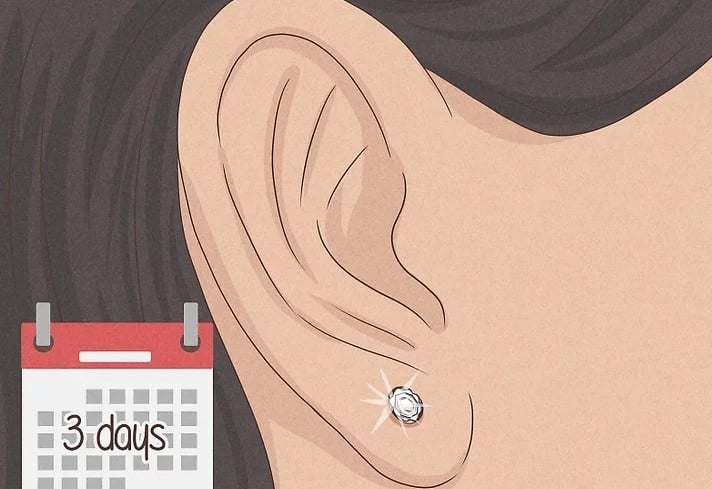

Part-1: Cleaning Your New Piercing
Part-2 : Continuing to Care for Your Piercing
1.Keep your piercing as dry as possible.
Particularly when your piercing is fresh (for at least the first 3 days), you should keep it as dry as possible. While it will of course be wet when you apply your saline solution, you want to allow your piercing to dry out quickly.
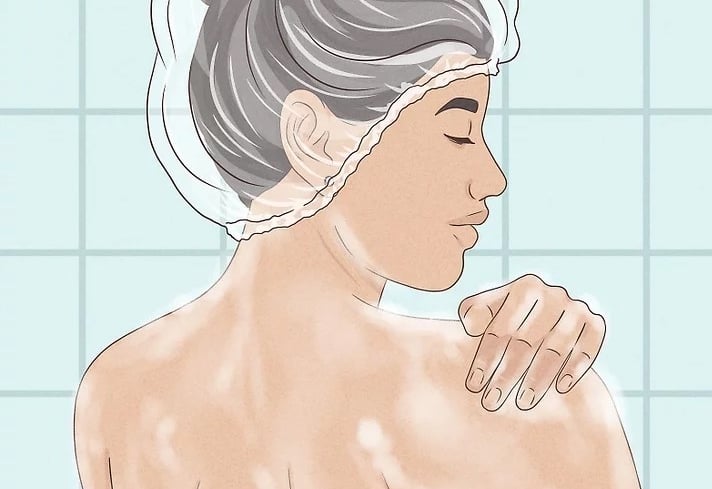

2.Shower carefully.
If you don't need to wash your hair, try wearing a shower cap when you shower or bathe. If you do wash your hair, do your very best to keep the shampoo and water away from your ears.
Don't think that letting the shampoo wash over your ears will be sufficient for cleaning your piercings. If anything, the ingredients in your body wash or shampoo can further irritate your piercing.


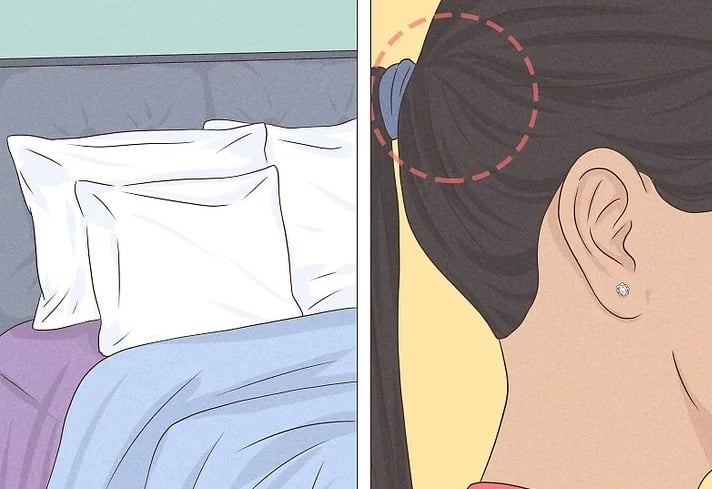

3.Skip the swimming pool.
4.Allow only clean materials to touch your piercing.
You should also look for other forms of exercise besides swimming while you wait for your new piercing to heal. Stay away from public pools and hot tubs, or if you really want or need to visit them, then it goes without saying that you shouldn't dunk your head!
Besides making sure that your hands and cleansing materials are sterile, you should carefully wash all of your bedding, hats, and scarves that may come into contact with your new piercing.
You may even want to wear your hair pulled back from your piercing for a while.

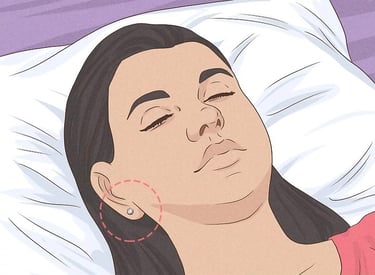
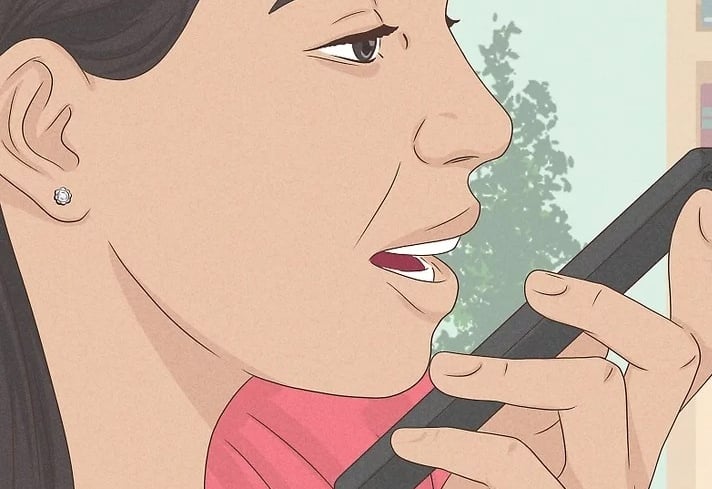

5.Treat your piercing gently.
6.Adjust your phone habits.
If you only have 1 ear pierced, you'll probably find it more comfortable to sleep on the opposite side, and your ear may heal more quickly as a result.
If both of your ears are pierced, then try to sleep on your back and avoid doing anything that will put pressure on the piercings.
You'll also want to be careful when you talk on the phone to not put pressure on your ear and to not bring your phone (which can harbor quite a lot of dirt and bacteria) into direct contact with your piercing.
Consider using the speaker-phone function for a while!
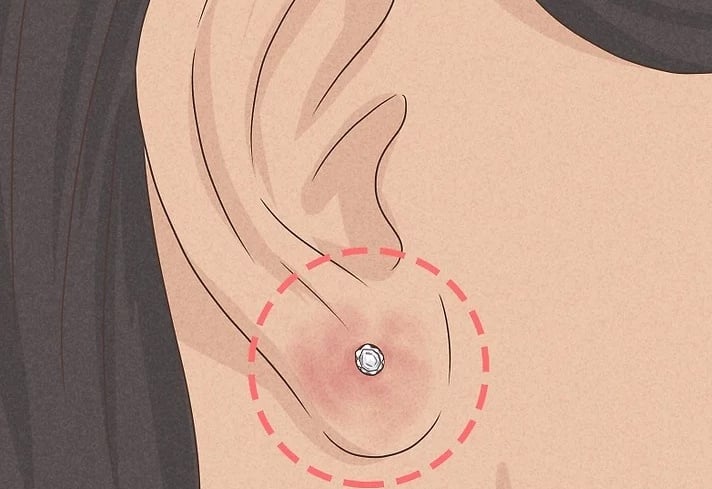



7.Be on the lookout for signs of infection.
8.Leave your earring in if you suspect an infection.
Even if you follow all of the above steps religiously, you could develop an infection. See your piercer if you suspect an infection. They can suggest home treatments to try or recommend seeing the doctor if you appear to have a serious infection.
If your ear or the surrounding skin is red or swollen, you may have an infection developing.
An infected ear may also produce a green or yellow discharge, and may be extra tender to the touch.
Similarly, if your ear is warm to the touch or if you develop a fever, your new piercing may be infected, in which case you should definitely seek medical attention.
While you might be tempted to immediately remove your piercing if you think you have an infection, it's best to wait until you've seen a professional piercer or a doctor.
If you take the earring out too early, it could begin to heal over and trap the infection inside the wound. This can lead to the formation of an abscess, which can be serious and painful to care for.


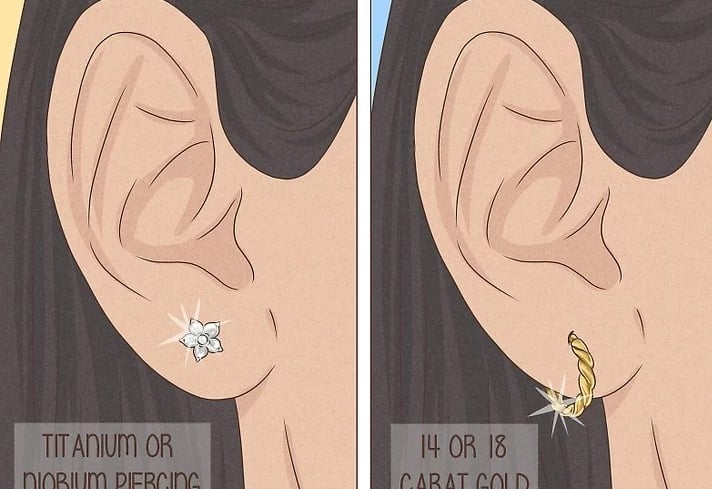

9.Talk to your doctor about stronger antibiotics for a cartilage infection.
10.Rule out a metal allergy.
Your cartilage piercing may be more likely to become infected, and if it does, it will probably be more difficult to treat than a regular piercing. This is because the cartilage doesn't have its own blood supply, and it's therefore harder for your prescribed antibiotics to do their work.
Talk to your doctor about what is being prescribed for your infection; a stronger drug is often needed.
If your ear doesn't seem infected, but is uncomfortable, itchy, or slightly swollen, you may have a sensitivity or allergy to the metal used in your piecing. Many people are allergic to nickel, cobalt, and/or white gold.
The best choices for a new piercing are niobium, titanium, or 14 or 18 carat gold.
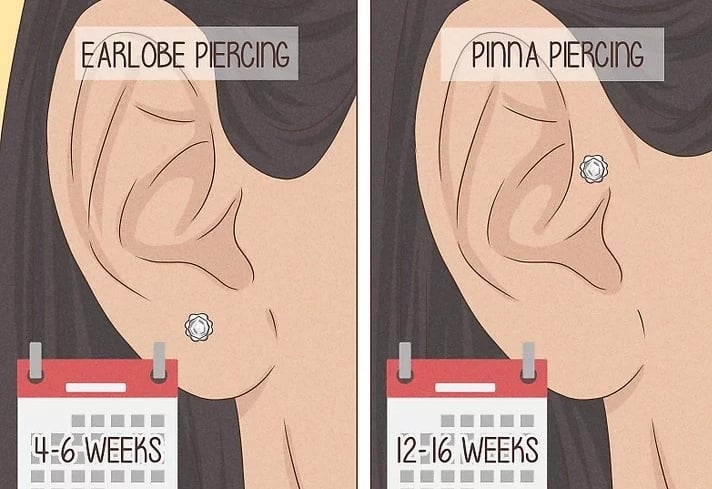


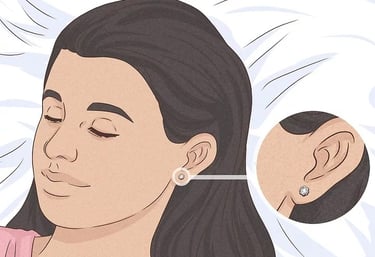
11.Be patient.
12.Keep your piercing stud in until your ear is fully healed.
Even with careful cleaning and no infection, an ear piercing can take a while to heal. If you pierced your earlobe, you should plan on waiting 4 to 6 weeks for it to heal completely.
If you pierced your pinna (the area above the lobe of your ear), it can take up to 12 to 16 weeks to heal.
If you take out your piercing before the wound has fully healed, the hole(s) can begin to close over. Thus, you should leave them in, even to sleep, until the piercing has healed completely.
Even after the piercing has healed, it’s a good idea to keep something in it as much as possible to prevent it from closing up.
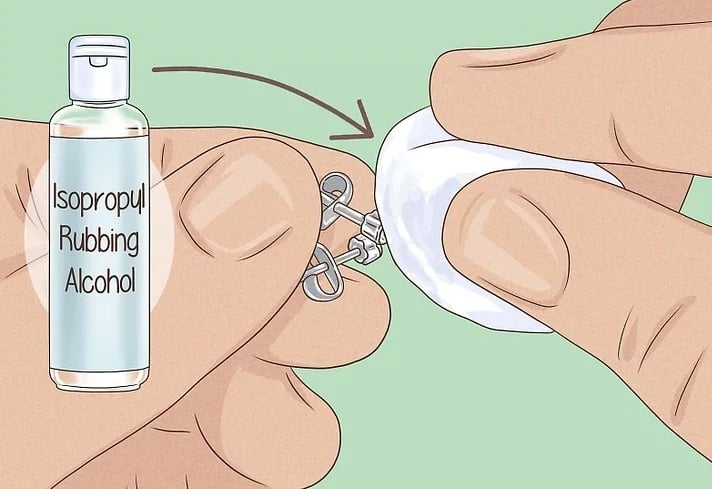

13.Continue to keep it clean.
Make it part of your routine to wipe down your earrings with rubbing alcohol when you take them out, and again before you put them (or a different pair) in again.
This simple step will help ensure that your ears are healthy and that you can enjoy experimenting with fun and different accessories.
Follow Us
📞Call/WhatsApp: 9099555058
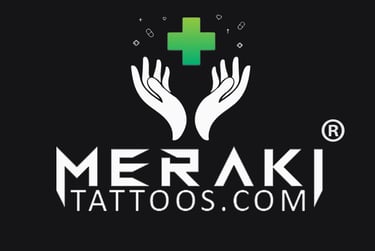

Meraki tattoos and Piercing studio is an Ahmedabad’s leading tattoo and piercing studio
📍 Address :
132,first floor,Himalaya arcade B,
near lapinoz pizza
Opp vastrapur lake, vastrapur, Ahmedabad
Studio Timings
All Days, 11:00 AM - 09:30 PM
